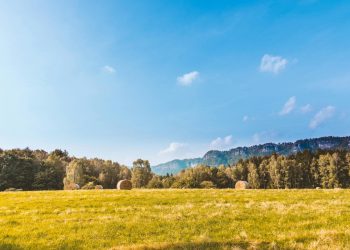In a world where everything seems to race forward — from buzzing notifications to relentless deadlines — the subtle art of mindful observation quietly fades into the background. We pass by faces, landscapes, even entire days without truly seeing them. But what if the key to a richer, more meaningful life wasn’t in doing more, but in noticing more? In slowing down, paying attention, and tuning into the hidden symphony playing all around us?
Mastering the art of mindful observation isn’t merely a feel-good practice for quiet afternoons. It’s a transformative shift in how we experience existence itself. It invites us to see beyond the surface, to detect life’s hidden layers, and to reconnect with a sense of wonder that modern life often erodes.
The Forgotten Skill of Paying Attention
Historically, keen observation wasn’t a hobby — it was survival. Early humans relied on their senses to detect danger, track prey, and interpret changes in weather. Their lives depended on noticing the subtlest shifts in their environment. Today, our lives are less threatened by predators, but perhaps more endangered by our chronic inattention.
Technology, for all its marvels, has conditioned us toward distraction. We scan headlines, skim emails, swipe through social feeds — always flitting, never settling. In this rapid dance of fragmented focus, we sacrifice depth for breadth. We know a little about everything, yet deeply perceive very little.
Mindful observation dares to defy this pattern. It asks us to resist the lure of the next thing and instead plant ourselves firmly in the now. It invites a slower, richer relationship with the world — one that doesn’t just see, but understands.
Observation as an Active Practice
It’s easy to assume that observation is passive, something that just happens if we leave our eyes open. In truth, mindful observation is an active, intentional process. It requires effort, patience, and humility. We must acknowledge that much of what we think we see is filtered through assumptions and expectations. Mindful observation demands we wipe those lenses clean.
This means using all five senses, not just sight. Listening carefully to the way a friend’s voice rises and falls. Noticing the earthy scent after a rain. Feeling the grain of old wood beneath our fingertips. Tasting the complex bitterness of coffee without rushing to gulp it down.
Mindful observation isn’t about analysis or judgment. It’s about direct experience. It’s the difference between labeling a flower as “pretty” and actually noticing the intricate veins lacing its petals, the delicate tremble in the breeze, the faint scent it releases into the afternoon air.
The Deep Benefits of Learning to See
At first glance, mastering observation may seem like a quaint pursuit — something pleasant, but nonessential. In truth, its benefits are profound and far-reaching.
One of the most immediate rewards is heightened creativity. Artists, writers, and inventors often attribute their breakthroughs to a capacity for noticing what others overlook. By tuning our minds to the fine details of the world around us, we begin to see connections, patterns, and possibilities invisible to a hurried mind.
Emotional intelligence also blossoms through observation. Being attuned to small cues — a pause before a word, a fleeting glance, a shift in posture — allows us to empathize more deeply. We move beyond surface interactions and into a realm of richer, more authentic relationships.
Even our mental health stands to gain. Mindful observation anchors us in the present, loosening the grip of anxiety over the future and regret over the past. It fosters gratitude, as we start to see abundance in what once seemed mundane: the rustle of leaves, the comfort of a worn chair, the way light scatters across a windowsill.
Practical Ways to Cultivate Mindful Observation
Like any art, observation must be practiced to be mastered. Luckily, life constantly offers opportunities.
- Deliberate Slowness:
Choose one daily activity — eating a meal, taking a walk, brushing your teeth — and do it at half your usual speed. Pay close attention to each sensation. Notice textures, temperatures, sounds, and scents. What details emerge when you slow down? - Sensory Focus Sessions:
Set aside five minutes a day to engage one sense fully. For example, sit outside and listen without trying to identify the sources of sound. Just experience the layers: the nearby and distant, the rhythmic and erratic. Later, try the same with sight, smell, or touch. - Curiosity Journaling:
Instead of keeping a traditional diary, try a curiosity journal. Each day, jot down five things you observed that sparked wonder or curiosity. Don’t analyze — simply record them. Over time, you’ll train your brain to seek out and savor the extraordinary within the ordinary. - “Zoom In” Practice:
Choose something small — a leaf, a crack in the sidewalk, a corner of a room — and study it deeply for five minutes. Notice as much as you can: colors, patterns, changes in light and shadow. Resist the urge to move on quickly. - Let Go of Labels:
When observing, avoid immediately categorizing (“tree,” “bird,” “car”). Instead, describe without naming: “a tangle of green blades swaying,” “a streak of brown darting between branches.” This keeps your mind fresh and open, rather than falling into automatic thinking.
The Challenges on the Path
Mastering mindful observation is not always smooth. The modern mind resists stillness. Boredom, impatience, and distraction will tug at you. You may question whether you’re “doing it right” or whether it’s “worth it.”
These challenges are part of the process. Mindful observation isn’t about perfection or performance. It’s about returning, again and again, to the richness of the moment — even when your mind wanders, even when the moment seems dull.
Persistence transforms the practice. Over time, observation stops feeling like an exercise and starts becoming a way of being. Life becomes layered with texture and nuance. You see more, feel more, and, paradoxically, find a deep stillness within all that movement.
A Life Transformed
When we master the art of mindful observation, the world changes — or rather, we change in how we meet it. The everyday is revealed as extraordinary. Conversations become more intimate. Landscapes become more vivid. Small joys become magnified.
We often search far and wide for meaning, fulfillment, and beauty, imagining them hidden somewhere distant. But mindful observation reminds us that these treasures are already all around us — scattered like stars, waiting to be seen by those willing to look closer.
In the end, mastering mindful observation is about more than seeing the world. It’s about inhabiting it fully. It’s about trading distraction for presence, haste for depth, habit for wonder.
And perhaps, it is about remembering that life itself is not a race to the finish line — it is a work of art meant to be noticed, savored, and loved, one exquisite detail at a time.











